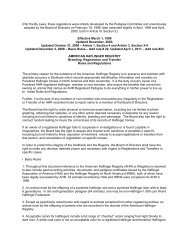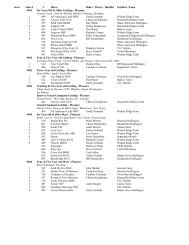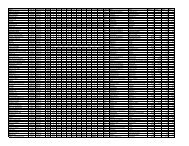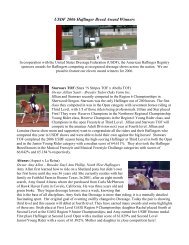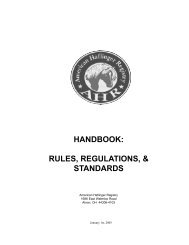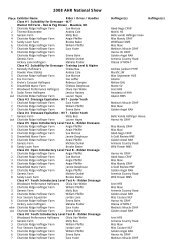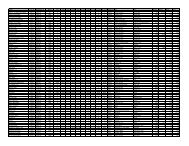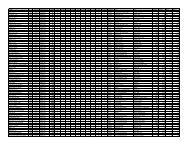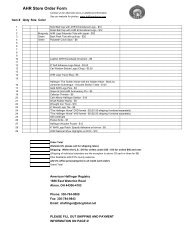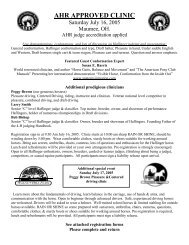handbook - American Haflinger Registry
handbook - American Haflinger Registry
handbook - American Haflinger Registry
Create successful ePaper yourself
Turn your PDF publications into a flip-book with our unique Google optimized e-Paper software.
C. Breast collars are appropriate with lightweight vehicles. Full collars are suggested for heavy vehicles such ascoaches, brakes, phaetons, dogcarts, etc.D. A correctly fitting harness saddle is important for the comfort of the horse. A wide saddle is suggested for twowheeled vehicles as more weight rests on the horse’s back. Narrow saddles are more appropriate for four wheeledvehicles.E. Martingales and overchecks are prohibited in dressage classes for all vehicles. Sidechecks are optional.F. Snaffle bits and other types of traditional driving bits are allowed. Bits may be covered with rubber or leather.VII.THE VEHICLEDrivers should strive to present an appropriate turnout. Appropriate indicates the balance and pleasing appearanceof the combination of horse and vehicle. Factors determining the above include compatible size, type, andweight of horse and vehicle.VII.WORKING CLASSA pleasure driving class in which entries are judged primarily on the suitability of a horse to provide a pleasantdrive.A. To be shown both ways of the arena at a walk, slow trot, working trot and a strong trot. To stand quietly, both on the rail andwhile lined up, and to rein back. All entries chosen for a work-off may be worked both ways of the arena at any gaitrequested by the judge and be asked to execute a figure eight.B. To be Judged:1. 70% on performance, manners and way of going.2. 20% on the condition and fit of the harness and vehicle.3. 10% on neatness of attire.VIII.TURNOUT CLASSA pleasure driving class in which entries are judged primarily on the performance and quality of each turnout.A. To be shown both ways of the arena at a walk, slow trot, working trot and strong trot. To stand quietly and rein back. Alldrivers chosen for a work-off may be worked both ways of the arena at any gait requested by the judge and may be asked toexecute a figure eight and/or perform other appropriate tests.B. To be judged:1. 40% on performance, manners and way of going.2. 30% on the condition, fit and appropriateness of harness and vehicle.3. 15% on neatness and appropriateness of attire.4. 15% on overall impression.7/08 VI-A-965




